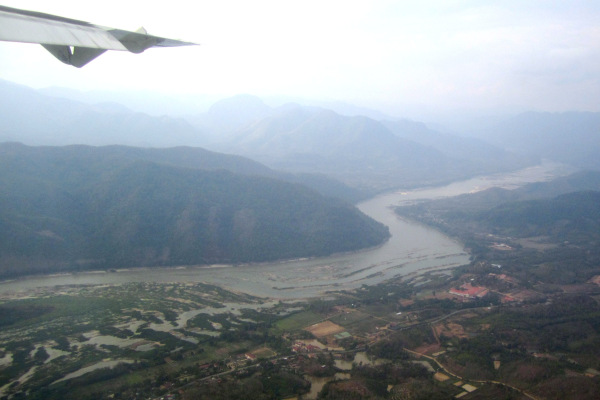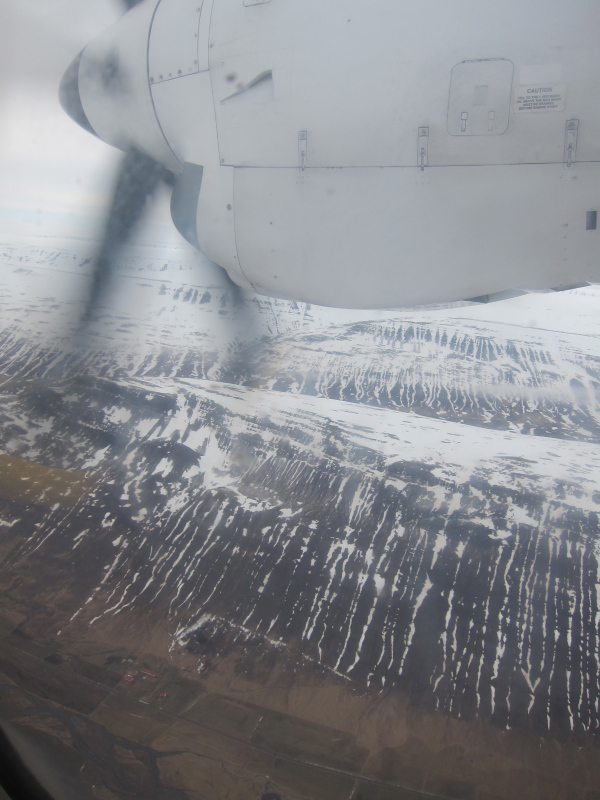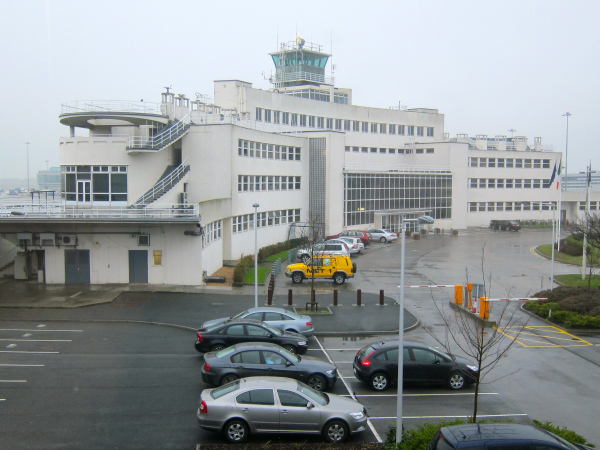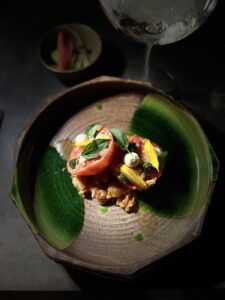Does wine taste different when you’re on an airplane?
The simple answer is yes. But this easy question has contradictory answers. The information is largely anecdotal, and there’s a lack of research about why wine tastes differently at twenty-eight thousand feet above sea level than it does on the ground.

After reading dozens of articles, blogs, and research papers – I’ve come to these conclusions:
There are two sources for why wine tastes differently during a commercial plane flight than it does on the ground. First – our taste buds register tastes differently high in the sky. This is the major reason. Second, the chemistry of wine alters in the environment of a plane. This is a minor reason.
Let’s look at the major reason first.
In the sky, our sense of smell and taste alter due to three principal factors. First, cabin air pressure is lower than at sea level. Second, cabin air is relatively dry (or has low humidity). Third, the engine background noise level is relatively high.
All three factors impact taste.
Even if you were even close to sea level – sitting at a wine store in Napa, Bordeaux, or Walla-Walla in Washington state – and a storm system suddenly cruised in and the clouds gathered above and the air pressure shifted from high (sunny) to low (murky), the wine before you would likely taste slightly differently before and after the weather shift. Changes in atmospheric pressure will change how wine gives off odors, and change the way that your nose and taste buds perceive the taste of that wine.

At twenty-nine, or thirty thousand feet above sea level (an odd number means that you are flying east; an even number means that you are flying west. You didn’t know that, did you?), cabin pressure is lower than at sea level. On commercial airlines, the pressure is maintained at about the same as if you were sitting at eight thousand feet above sea level, or as high as the city of Aspen, Colorado.
Generally, reduced air pressure in the cabin dulls your taste buds. This is partly because there are fewer molecules you are available to sniff, and partly because the mild hypoxia (lack of oxygen) caused by a lower cabin pressure impacts how oxygen is transferred within the body. Also, studies show that the relatively high noise levels inside an airplane (95 decibels) reduces our ability to taste salt and sugar (but increases our ability to appreciate crunchiness in food). These factors mean that for wine, your ability to taste fruitiness is diminished, which is why airlines often serve fruit bomb wines – to overcome your diminished taste for it.
The reduced moisture in an airplane cabin impacts the efficiency with which we salivate. Usually tannic wines cause us to salivate heavily in order to reduce the astringency of tannins. But because our salivation works less well in the dry conditions up in the sky, tannic wines often taste more tannic. Perhaps for the same reason, the taste of acidity in wines also comes out stronger when you are on an airplane.
With our sense of fruitiness diminished, while our sense for tannins and acidity increased – we may suddenly better appreciate the fruit of a Merlot, or an Amarone, while finding the tannins of Cabernet Sauvignon undesirable. For whites, a sweet Riesling may appeal to us more than it would on the ground, while we might find the acidity of a Sauvignon Blanc over the top.

Earlier, I mentioned how the chemistry of the wine itself changes in cabin conditions. The low pressure inside a cabin means that volatiles may leave our wine more quickly than down on earth, and often this means that fruit flavors march off first. That just adds to the diminished taste of fruit in wine at altitude.
To test out if these ‘guidelines’ are actually considered by airlines, I inspected a 2012 wine list from Etihad (Etihad is based in Abu Dhabi in the United Arab Emirates). Excuse the poor quality of the scan below, and the crinkles from folding the drinks menu to put in my pocket. I’ll address a few of the wines.
Do these wines ‘comply with the sky?’
White Wine
- Chateau de Chassagne-Montrachet AOP Saint Aubin 1er Cru, “Le Charmois,” 2008, Burgundy, France
The review I found is for a 2006 bottle, but the characteristics are likely similar. The review includes:
“…pleasant buttery and light oak like bouquet…medium bodied, balanced, smooth, with traditional light oak…”
The key term here is ‘light oak,’ which indicates not heavy on tannins.
- Terrazas de los Andes Reserva Torrontés 2011, Salta, Argentina
The wine review for this (click on the wine name above), mentions “Its white flower aromas, such as orange blossom and rose combine harmoniously with its intense fruity notes of pear, mango and passion fruit. On the palate, it is fruity and sensual, with excellent acidity…”
‘Intense fruit notes,’ and ‘excellent acidity’ mean lots of fruit and not too much acidity. This wine will likely stay tasty in the sky.
- Villa Maria Cellar Selection Sauvignon Blanc 2012, Marlborough, New Zealand
The wine review includes, “mid-palate weight, and a balanced acidity.”
Again, I’ll interpret ‘excellent acidity’ to mean not too high – meaning ‘cabin compliant.’
Red Wine
- Segla 2008 Margaux, Bordeaux, France
I’m including quotes from two non-professional tasters who published their thoughts on the Cellar Tracker site:
“Complex cedar, sweet dark fruits and rose perfume…Medium – full-bodied. Fine grained tannin…”
“This has intense and expressive aromas of blackberry…A bit lean at the back that seems lack of the structure for the long term but, who cares?”
Both quotes hit on the intensity of fruit, and the low level of tannins (‘lack of structure’ means, basically, lack of tannins). Once again – the wine sounds fruit forward and not too tannic. Considering this is a left bank Bordeaux blend, which is typically dominated by Cabernet Sauvignon, the laid back tannins is atypical, but right on for drinking during a flight.
- George Wyndham Founders’s Reserve Shiraz 2010, Langhorne Creek, South Australia
The Australian Crackawines website gave me the following review:
“…black berry cola fruit. The palate is pippy, currants and black fruit, medium long and low in tannin, high in acid on the finish.”
So, high in fruit and low in tannin – good for the skies. But the high acid might not be such a delight up high.
Taste.com, also from Australia, said much the same:
“…concentrated and glorious fruit aromas, and ripe crimson berries…balanced by subtle oak.”
‘Glorious fruit’ and ‘subtle oak’ indicate lots of fruit and low tannins.

Conclusion? Airlines buy wine depending on price, availability, on its regional origin (flights to, say, South America usually feature Chilean or Argentinian wines), and on taste. Typically, blind tastings are made of hundreds of wine before a few are selected, and the selections in Business or First class are usually changed about every three months.
Tasters are aware of what tastes well in the sky, as evident from this press release from British Airways. Judging from our above inspection of an Etihad wine list from last year – you should expect wines that are high in fruit, and not high in either tannins or acidity.
That said, newer aircraft such as the Boeing 787 are being designed to reduce the cabin pressure, increase the cabin humidity, and decrease cabin noise – all of which will reduce the impact of how the taste of wine alters between the earth and the sky.





Malachi Rempen
5 Nov 2013If the cabin’s air pressure dulls your taste buds, does that mean that airline food is usually much, much worse than we think it is??
vinoexpressions
5 Nov 2013Hopefully not.
One food that appears to taste better while cruising in a plane is ice cream. But munching only ice cream for a 15 hour flight would cause way too many sugar highs and lows. And although our tolerance for salt goes up, and we enjoy crunchy foods even more, those American Airlines peanut bags just don’t do it for me. Am looking forward to cruising in a 787 and finding out if food and wine will actually taste better than in other flights…
vinoexpressions
6 Nov 2013Guess I didn’t answer your question…which is a good one: Does the cabin environment make good food taste bad, or bad food taste worse? Both, probably. They put extra salt, spice, and herbs on meals so that you can better taste flavors when your taste buds are dulled. But if airline food is hyped with spices, I wonder – how does it taste at ground level?
Mick Coker
5 Nov 2013Great article Tom!! One question though. Does this occur at different elevations on land. For instance the Sandia Mountain Peak is 10,000 ft. while Albuquerque NM is at 5000 ft. above sea level. Atmospheric pressures are different in this 5 mile radius. When in the high elevation areas, should the restaurants be looking at this same formula for serving wines?
vinoexpressions
5 Nov 2013Good question, Mick. I am including two links below. One is an old scientific study that says that there is a significant difference in perception of taste
sea level and 5,000 feet elevation (where you are in Albuquerque), but not much between 5,000 and 10,000 feet. The other says that at higher altitudes, our perception of bitterness is toned down. So maybe the beers you brew will taste differently at sea level than in Albuquerque – NOT because the beer actually changes (or not much) but because people’s perception of taste changes.
But your question remains – does food taste differently in Albuquerque than in Los Angeles? I’ve never noticed that….but maybe if we are acclimated to altitude from living at elevation for weeks, our taste perceptions rapidly switch – or adapt – from one altitude to the other so that we perceive food to taste roughly the same. Complete speculation on my part.
One key to how altitude impacts taste is acclimation. When we are in a plane, we are rapidly thrust into the altitude equivalent of 8,000 feet above sea level…whereas if we drive from sea level to that altitude over the space of hours, or days, the impact of taste differences may not be as noticeable.
Check these two out:
http://homebrew.stackexchange.com/questions/6615/does-elevation-have-an-effect-on-the-taste-of-beer
http://www.amsciepub.com/doi/pdf/10.2466/pms.1972.34.2.667
Mick Coker
6 Nov 2013Thanks again Tom. Clint and I discuss these types of issues and you have definitely answered some of these questions. Again this is a great Article and we are very happy that we follow your posts. Cheers, we love you!!
vinoexpressions
6 Nov 2013Thanks Mick…you and Clint are way up on the science side of brewing, so probably know more than I can offer. Wonder if your mead tastes differently at sea level?
Mick Coker
6 Nov 2013I had never thought about it but after your article it makes me think they would be different.
Mick Coker
6 Nov 2013As far as food goes, I don’t think there is much of a difference because it seems that Tannins seem to be one of the main reasons for the taste difference. The more tannins the more bitter and the larger the taste profile difference. Red wines have more tannins because they are fermented with the seeds and vines.
vinoexpressions
6 Nov 2013I think you need a field test….one bottle at your restaurant, and then take the Sandia tram uphill to down another bottle…then let us know!
Mick Coker
6 Nov 2013Alex and I will give that a try!! We you were here with us to give it a go!!